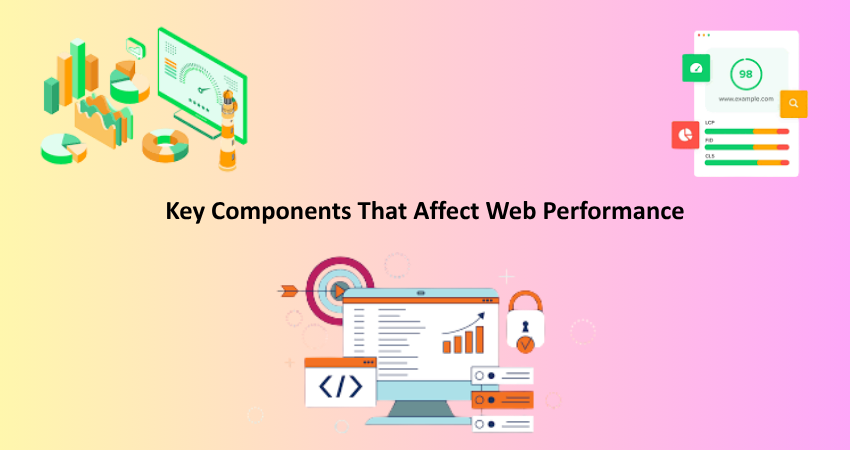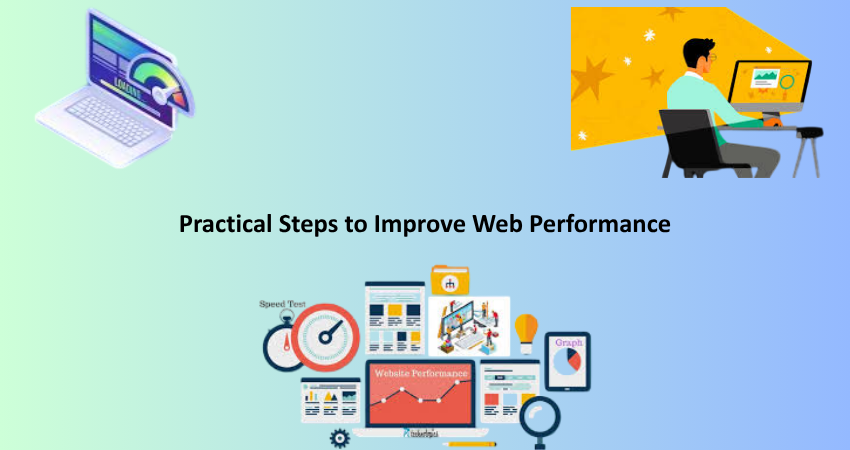
Introduction
The end of the digital world recognizes the performance of a website as one of the important factors that determine the user satisfaction, engagement, and final success of the business. Performance may sound like a technical concept that is best left to the developers, but in reality, performance impacts everyone: marketers, designers, entrepreneurs, project managers. Web Performance is not only about speed- it is about facilitating an excellent user experience through quickly loading web pages, keeping visitors on the site, boosting conversions, and increasing visibility on search engine results pages like Google. Indeed, just by adding one second delay, conversions and customer retention drop significantly. This is why performance optimization is a business-critical priority.
This article aims to demystify the jigsaw puzzle of web performance for the laypersons. One does not need to know coding and server infrastructure to know the essential governing principles behind fast and reliable surfing. In the end of this guide, one will understand the factors involved in determining the speed of a website, how performance is measured, and actions you can take without creating a single line of code to improve performance. Whether you manage a business site, are looking after updates with the content, or while working with a program developer, your foundational knowledge of website performance will empower your decisions and arguments for a better digital experience.
Why Web Performance Matters
User Experience and Engagement
The most direct and obvious effect of performance on the web is on the user experience. Imagine clicking on a link only to see a blank page loading for a few seconds—it is maddening, isn’t it? Users expect fast-loading and instant-responsiveness from websites. In a world where users have very short attention spans and only a click or two from a competing site, a slow site will lose users before they ever see your content. Studies show that almost 40% of users will abandon a site if it takes longer than three seconds to load. Performance, therefore, is no longer a technical issue; it has now become a core issue in user retention and satisfaction.
Fast web page loads play a role in making the whole user experience smoother across the site. Faster-loading web pages keep visitors glued to the website and help reduce bouncing rates, thus increasing the chance of having the visitor viewing more content or performing an action such as signing up or buying something. A fast web page feels more professional and trustworthy, enhancing the value of a serious brand. It also reflects in e-commerce, and the speedier a checkout, the more sales an e-commerce store makes. Good web performance is more than just an added luxury. It goes a long way towards providing a positive experience and getting users to return time after time.
SEO and Search Engine Visibility
Ranking algorithms employed by search engines like Google are speed-centric. Hence, slow sites are bound to rank lower in search results than fast ones. Google Core Web Metrics, which are geared toward user experience, now form an important part of the SEO strategy. Metrics like loading time, interactivity, and visual stability are affected by web performance, so speed is pivotal in ranking considerations rather than being merely a back-end issue-even the site would be incapable of facing the exposure and digital marketing success.
For businesses that rely on organic search traffic, performance problems kill their reach and revenue potential. A slow-to-load website would be penalized by search engines even as users depart. A slow site ruins these potential leads, whatever your spendings on content marketing or PPC advertising. Fortunately, performance is something you can brush up on even without a technical flair-to these ends engaging with your SEO folks or your developers to have the site optimized for speed and search rankings.
Key Components That Affect Web Performance

Hosting, Servers, and Infrastructure
The basis of your website’s performance actually comes from the hosting environment and server architecture. It sounds all too much technical; however, the influence is straightforward. When a user gets into your site, the browser sends a request to a server—mostly found in a data center—where the files making up your site are stored. The quality of this server and the speed decides how quickly that request will be served. Cheap or poorly configured hosting can slow response times, especially during peak hours. That’s why the first steps to web performance improvement are implementing a reliable hosting provider for web hosts.
Understanding the kinds of hosting that are available is extremely useful for non-techies to make the right decisions. For example, shared hosting is really cheap, but it usually means a slower speed because many other websites share the resources with yours. VPS (Virtual Private Server) and dedicated hosting are both much faster and more reliable, but costs a lot more. Cloud hosting is on offer from services like AWS, Google Cloud, or Azure. It provides scalability, which means that your site easily manages very high amounts of traffic without crashing. You may not see it, but by having an idea of how these systems affect the site, you’ll know what kind of provider to choose and what questions to ask if your site is having performance issues.
Website Design and Content Size
The amount of and kind of content on your site is then the other major factor influencing its performance. Large images along with unoptimized videos can be quite costs when loading and using excessive animations. Each one of these elements adds weight to the load which will have to be transferred so that it will be possible for a certain page to be viewed. Consider a homepage with five high-resolution images. It might be terrifyingly beautiful, but if those images are not resized for the web or compressed, they can take seconds for the entire page to load. It angers users and gets poor performance scores on tools like Google PageSpeed Insights.
Fortunately, many such problems can be solved without tech know-how. There are several solutions to compress images before uploading them, such as TinyPNG or Squoosh, and even website builders like WordPress provide this option. Similarly, using text headers instead of image-based headers and using click-to-play for video playback instead of auto-playing will greatly reduce download time. The overall design of your site—scripts, fonts, and also the use of plugins—affect the speed within which the contents appear on the screen. For example, just reducing a font or limiting the number of third-party widgets used can create measurable performance gains.
Measuring Web Performance in Simple Terms
Tools You Can Use Without Coding Skills
No need to be a developer for web performance measurement. Many tools are easy enough to let you check performance in plain English. Almost anyone can comprehend how their website is performing with such tools. Google PageSpeed Insights is a very famous tool to evaluate both mobile and desktop versions of probably any website for free. It rates performance out of 100 and splits improvement areas like image compression or loading times of scripts. Each suggestion comes with an explanation of how to fix them with your developer or manager of your website.
GTmetrix is another useful measuring tool, but it helps give a visual breakdown of load times and identifies what slows down your page. There are numerous tools, for instance, WebPageTest, Lighthouse (part of Chrome DevTools), but all give great insights but are slightly more technical. The important takeaway from this is that you do not need to know how to write code to interpret these results. You can just run a performance check regularly and get the basic metrics to track improvements, spot bottlenecks, and ensure your site is performing well.
Understanding Key Metrics: Load Time, TTFB, and CLS
Although performance tools can sometimes give an overwhelming amount of data, such as Load Time—how long it takes for your website to become usable for a visitor. From the initial server response to the moment you see text, and images appear on your screen, everything counts when measuring Load Time. Ideally, it should take less than three seconds for your site to load so that users stay engaged and do not bounce back. However, this optimization may involve media optimization; reduced number of plugins, or better hosting, if Load Time exceeds three seconds.
Another one is Time to First Byte (TTFB): the time taken from the moment the server starts receiving the request until it has the first byte of data ready to send back. A slow response TTFB is mainly related to servernot-proper hosting or poor volume of inefficient code. Cumulative Layout Shift (CLS) which explains itself: it also describes how much one’s page layout shifts towards loading. Shifted values in CLS are likely to mean that content moves around the moment elements load, which may create frustrating experiences. With this general metric monitoring, your site will feel stable, responsive, and trustworthy, even when you don’t manage the technical implementations.
Practical Steps to Improve Web Performance

Optimizing Images and Multimedia
There are several things that come under image optimizations, and apart from being a simple thing, it is also a good way to improve web performance against slow loading pages. High-resolution pictures are often the single biggest reason why pages start loading slowly, especially in the case of mobile phones that usually come with limited bandwidth. So, begin with file formats—use JPEG for photographs, PNG for graphics that need transparency, and WebP for high-quality images that can be stored in smaller file sizes. Next step is to resize the images to fit their display dimensions—there’s frankly no use uploading a 3000×2000 pixel image when it is only displayed as 600×400. You can do this easily through a tool like Canva, Photoshop, or an online compressor like TinyPNG.
Medium is another thing to think about in terms of images and videos going through the site. Instead of auto-playing videos that eat up too much bandwidth and processing power, let the visitors click to play. Implement lazy loading so that images and videos that are off-screen could be loaded when necessary. This means content below the fold does not load until the user scrolls down, enhancing the initial load times. You can also use content delivery networks (CDNs) that would serve images from the nearest server location of the user for faster delivery. These changes hardly require technical intervention, yet can result in some very significant performance gains.
Reducing Plugins and Third-Party Scripts
Plugins and third-party scripts—such as chat widgets, analytics trackers, and social media embeds—can be useful software extensions on any website. However, if these elements are not taken care of properly, they may also serve in making your pages extremely slow. Each plugin loads its own set of files; therefore, every time a plugin is active, it adds one more HTTP request to the total number of requests to be made by the browser to render your page. The higher the number of requests, the slower will be your page. Therefore, for non-tech persons using a platform such as WordPress, imposing a thorough check and thus limiting plugins to only the most necessary ones should be a case in point.
First, the inactive plugins should be disabled and removed. They may affect load times even while sitting idle. For active plugins, see if lightweight alternatives achieving the same purpose with less overhead are available. The same holds true for third-party scripts—loading excessive fonts, ad networks, or embedded feeds from social networks should be avoided. Instead, you can link the content of interest with text or icons. Reducing these elements lowers the amount of data that the users have to load, leading toward a faster and smoother web experience without giving up any features or design.
Conclusion
There are Web performance issues that developers must address because it is a requirement in developing a truly successful online experience that resonates with users, achieves marketing goals, and adds value to the business bottom line. For social welfare organizations this is a web performance awareness facilitating action and dialogue with technical teams and lobbying for a high-performance website for results. Performance improvement can be done from choosing the right hosting provider to optimizing images and cutting down on unnecessary plugins without writing a single line of code.
Given the increasingly cut-throat digital competition, every second does count. A speeding site leads to happier users, more conversions, plummeting SEO, and ultimately a stronger presence online. This web performance has to be relevant for everyone: whether you are a content creator, a businessman, or a digital marketer; it helps you be best informed in taking smart decisions while investing in the right solutions for that. The only thing that really matters when it comes to speed in today’s digital world is to brace yourself with the mindset and tools pointed out in this guide to guarantee that your website is not only pretty and functional, but also fast and efficient-bottom line foundation for veritable success in the digital age.